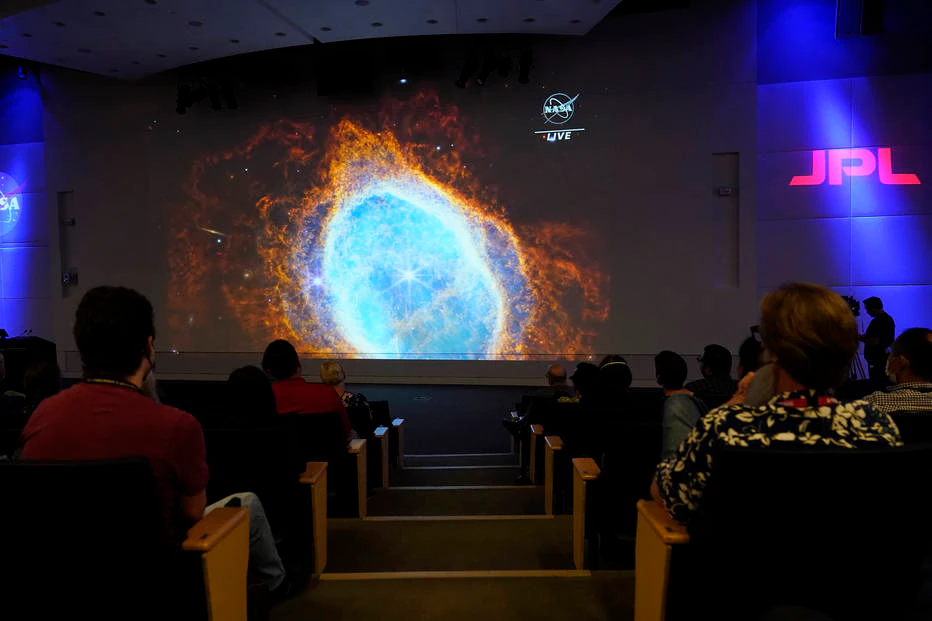The James Webb Telescope opens a new era in astronomy; Understand What Changes – The Science
4 min read
The first set of images and data captured by a file James Webb Space Telescope (JWST) Released this Tuesday, 12th, by NASAUS space agency. Modern equipment behind the telescope Hubble, in space in December of last year. According to experts, the revelation opens a new era of astronomy It shows the observatory’s ability to help answer some of the mysteries of physics and biology, as well as encourage other large-scale expeditions.
The set consists of the atmospheric composition spectrum of a giant and gaseous planet and four images of already known astronomical objects, which were photographed by his predecessor Hubble. With unprecedented clarity and depth, JWST has revealed “endless” galaxies and possible new stars, as well as previously unknown features.
With the help of these previously unseen details, the telescope will help answer the questions we’ve been asking ourselves for centuries: How did the universe originate and evolve? How stars are born and die? How do black holes work? Are there other habitable planets? This is because, as explained by the director of the space agency, Bill Nelson, the equipment will allow scientists to peek into scenes from 13 billion years ago – the Big Bang occurred 13.8 billion years ago.
The first picture was released on Monday the eleventh at a party attended by the American President, Joe Biden. The two meetings had a festive atmosphere for a project that involved more than 20,000 professionals and nearly 30 years of work to complete the engineering part. “We made the impossible possible,” said Bill Nelson, Administrator of NASA.
Nelson stressed that each image released was a “new discovery” that would give humanity a view of the universe “we never had before.” The telescope will help answer many questions about the origin of the universe, including those we haven’t even been able to formulate, said Günther Hasinger, director of science at the European Space Agency (ESA).
Joe Depasquale, a senior developer of Science Visuals at NASA, explained that the released images have been processed to enable details to be better seen. “We translate light we can’t see by applying colors like red, blue and green to our different filters from Webb.”
Sharpness and depth
Alexander Zabot, PhD, Physics and Professor at the Federal University of Santa Catarina (UFSC), explained that the greater clarity and depth is mainly due to two reasons: Infrared capture – a wavelength not yet captured by other telescopes – and the size of their mirrors – the diameter of the Hubble mirror 2.4 meters, while the web mirror has a diameter of 6.5 meters. “It can see much weaker targets than Hubble can see.”
The beginnings of the history of the universe can only be seen through infrared vision. This is because the further away some objects are in space, the fainter and redder their lights get, until they reach the infrared part of the spectrum.
Katharina Idar, a doctoral student in astronomy at the University of São Paulo’s Institute of Astronomy, Geophysics and Atmospheric Sciences (USP), added that the images were taken with a much shorter exposure time. In the images that Hubble took days, the JWST captured in hours. “Imagine what we would be able to observe from our universe in the years that James Webb worked.” A project for her, under the guidance of Professor Roderik Overzier, won some of the many hours of observation that the equipment would do.
new era
“This set of images shows that Webb came to change astronomy again, as Hubble had already done,” Szabot summed up. “It defines a new era in astronomy,” Catarina agrees. Zabot explained that the telescope could help answer the mysteries of cosmology – the area that studies the origin and evolution of the universe. “All frontier physics questions touch on the mysteries of cosmology.”
Among them, a major problem in particle physics: dark matter, which makes up 95% of the mass of our galaxy. He says, “We have no idea what this dark matter is. We think it is necessary to create a new theory of gravity that overcomes the equations of (Albert) Einstein, because they have some problems, in particular, they are incompatible with quantum mechanics,” he says. “The answer to these new equations lies precisely in developing better cosmological models.”
On the other hand, research in astrobiology for habitable exoplanets would also benefit. There are more than 5,000 planets outside the solar system. Spectrum analyzes, such as the gas planet analysis released this week, will help filter out analyzes that deserve attention. The presence of chemicals in the atmosphere of these celestial bodies, such as methane, for example, is an indication of the ability to harbor some life forms.
Zabot explained that this research, however, is not aimed at a new home for humanity. But yes, it is a comparison. “If we could look at another Earth-like planet and study that planet, we’d also better understand our lives here.”
Lucas Paganini, a NASA scientist, told EFE that he sees the equipment as unlikely to allow the detection of intelligent life outside the solar system, but that it could “distinguish the atmospheres” of other planets. According to him, “planets that are similar to us and that could harbor life.”
In addition, Catarina noted that the success of the JWST encourages the development of other large-scale telescopes. “Together with these tasks, we are getting new technologies that are also eventually absorbed by the market and our daily lives.” She cited examples of GPS and cell phone chips that store images.
Zabot noted that while the mission is expected to last ten years, Webb should have a long life. “Hubble has been in business for 30 years.” However, he said that because it is so far from Earth, JW will not undergo maintenance like its predecessor. /Collaborated with Roberta Janssen

“Musicaholic. Thinker. Extreme travel trailblazer. Communicator. Total creator. Twitter enthusiast.”







